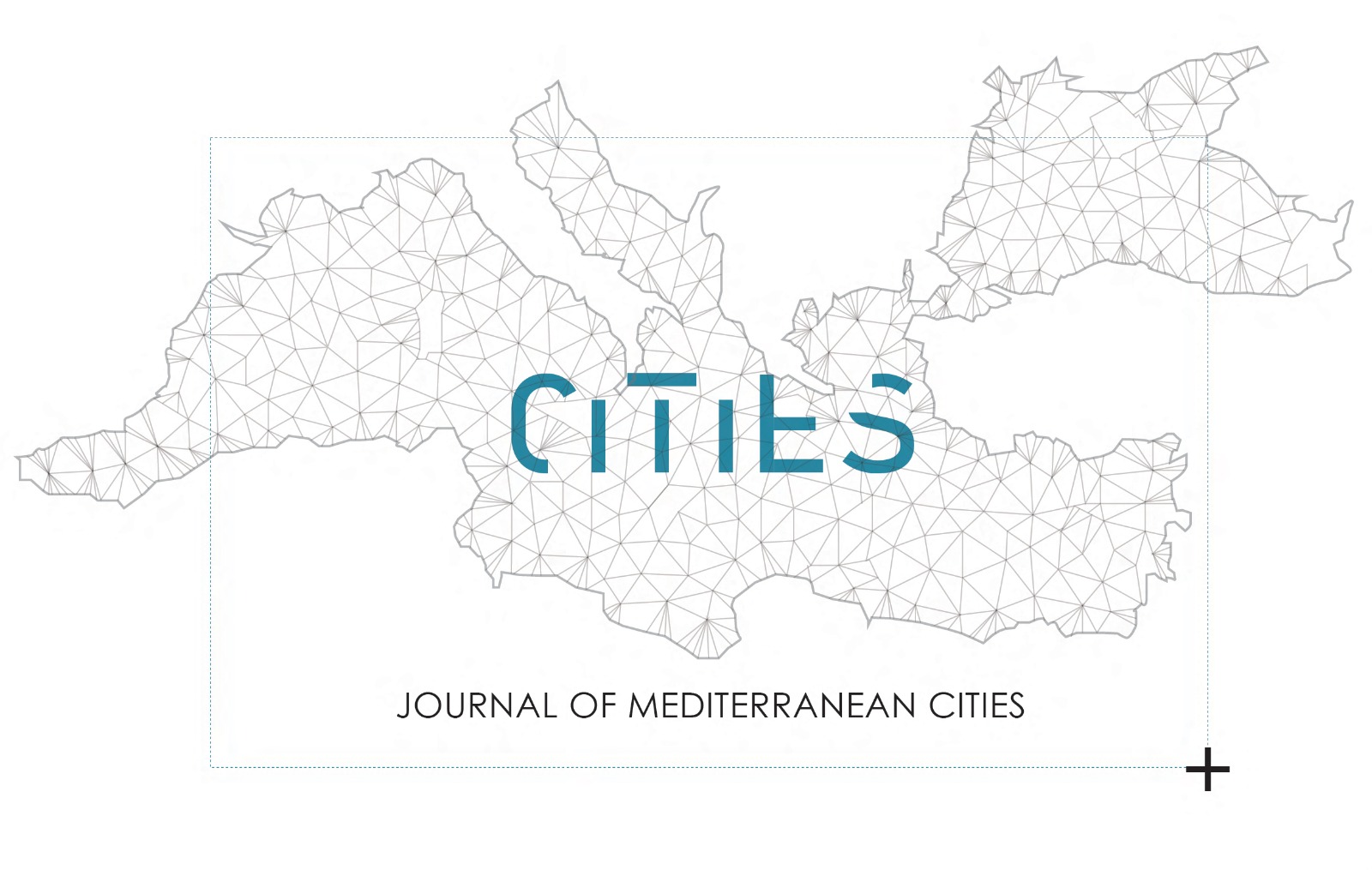Developing Design Strategies within Vernacular Context: A Social Responsibility-Based Approach to Architectural Education
DOI:
https://doi.org/10.38027/mediterranean-cities_vol5no1_4Keywords:
Architectural Education, Architectural Design Studio, Socially Responsible Architecture, Vernacular Architecture, Design ResearchAbstract
Although architecture is inherently shaped by social, cultural, and environmental factors, contemporary practices often limit architects’ engagement with broader societal responsibilities. Integrating “social responsibility” concept into architectural education provides a framework to address this gap, emphasizing ethical responsibilities, sustainability, and community involvement. Architectural Design Studio 3 at Abdullah Gül University, conducted during the 2022 and 2023 academic years, explored this idea by focusing on culturally significant sites, Divriği/Sivas and Büyükada/Istanbul, to study human-environment interactions and local habitat sustainability. Students conducted multidimensional design research to develop strategies at urban, neighborhood, and building levels. This study evaluates how well their design concepts reflect social responsibility principles. For this, a mixed-methods approach was used: first, a systematic literature review and thematic analysis were employed to define social responsibility principles in architecture; then, students’ concept statements were analyzed through content and thematic analysis. The findings show that these principles effectively guided students in developing inclusive spatial strategies responsive to cultural and environmental contexts. This highlights the importance of incorporating social responsibility principles into architectural education to enhance students’ ethical awareness, contextual understanding, and inclusive design thinking.
Downloads
References
Ajibike, W. A., Adeleke, A. Q., Mohamad, F., Bamgbade, J. A., & Moshood, T. D. (2023). The impacts of social responsibility on the environmental sustainability performance of the Malaysian construction industry. International Journal of Construction Management, 23(5), 780–789. https://doi.org/10.1080/15623599.2021.1929797 DOI: https://doi.org/10.1080/15623599.2021.1929797
Akalin, A., & Sezal, I. (2009). The Importance of conceptual and concrete modelling in architectural design education. International Journal of Art and Design Education, 28(1), 14–24. https://doi.org/10.1111/j.1476-8070.2009.01589.x DOI: https://doi.org/10.1111/j.1476-8070.2009.01589.x
Akotia, J., & Sackey, E. (2018). Understanding socio-economic sustainability drivers of sustainable regeneration: an empirical study of regeneration practitioners in UK. European Planning Studies, 26(10), 2078–2098. https://doi.org/10.1080/09654313.2018.1511685 DOI: https://doi.org/10.1080/09654313.2018.1511685
Bektaş, C. (2001). Halk Yapı Sanatı [Vernacular architecture]. Literatür Yayıncılık.
Braun, V., & Clarke, V. (2006). Braun, V ., Clarke, V .Using thematic analysis in psychology., 3:2 (2006), 77-101. Qualitative Research in Psychology, 3. https://doi.org/https://doi.org/10.1191/1478088706qp063oa DOI: https://doi.org/10.1191/1478088706qp063oa
Braun, V., & Clarke, V. (2013). Teaching thematic analysis : Overcoming challenges and developing strategies for effective learning. The Psychologist, 26(2), 120–123.
Brunetta, G. (2016). Territorial governance in the river districts: Methods and new tools for landscape design along the Po River. In R. Ingaramo & A. Voghera (Eds.), Topics and methods for urban and landscape design (pp. 85–97). Springer. https://doi.org/10.1007/978-3-319-51535-9_5 DOI: https://doi.org/10.1007/978-3-319-51535-9_5
Burton, L. O., & Salama, A. M. (2023). Sustainable Development Goals and the future of architectural education – Cultivating SDGs-centred architectural pedagogies. Archnet-IJAR: International Journal of Architectural Research, 17(3), 421–442. https://doi.org/10.1108/ARCH-08-2023-0201 DOI: https://doi.org/10.1108/ARCH-08-2023-0201
Calikusu, A. N., Cakmakli, A. B., & Gursel Dino, I. (2023). The impact of architectural design studio education on perceptions of sustainability. Archnet-IJAR: International Journal of Architectural Research, 17(2), 375–392. https://doi.org/10.1108/ARCH-09-2021-0251 DOI: https://doi.org/10.1108/ARCH-09-2021-0251
Casakin, H., & Goldschmidt, G. (1999). Expertise and the use of visual analogy: Implications for design education. Design Studies, 20(2), 153–175. https://doi.org/10.1016/S0142-694X(98)00032-5 DOI: https://doi.org/10.1016/S0142-694X(98)00032-5
Chakrabarty, B. K. (1998). Urban management and optimizing urban development models. Habitat International, 22(4), 503–522. https://doi.org/10.1016/S0197-3975(98)00029-0 DOI: https://doi.org/10.1016/S0197-3975(98)00029-0
Chakrabarty, B. K. (2001). Urban management: Concepts, principles, techniques and education. Cities, 18(5), 331–345. https://doi.org/10.1016/S0264-2751(01)00026-9 DOI: https://doi.org/10.1016/S0264-2751(01)00026-9
Chang, R., Zuo, J., Soebarto, V., Zhao, Z., Zillante, G., & Gan, X. (2017). Discovering the transition pathways toward sustainability for construction enterprises: Importance-performance analysis. Journal of Construction Engineering and Management, 143(6), 1–12. https://doi.org/10.1061/(asce)co.1943-7862.0001295 DOI: https://doi.org/10.1061/(ASCE)CO.1943-7862.0001295
Chapple, W., & Moon, J. (2005). Corporate social responsibility (CSR) in Asia a seven-country study of CSR Web site reporting. Business and Society, 44(4), 415–441. https://doi.org/10.1177/0007650305281658 DOI: https://doi.org/10.1177/0007650305281658
Collinge, W. (2020). Stakeholder engagement in construction: Exploring corporate social responsibility, ethical behaviors, and practices. Journal of Construction Engineering and Management, 146(3), 1–13. https://doi.org/10.1061/(asce)co.1943-7862.0001769 DOI: https://doi.org/10.1061/(ASCE)CO.1943-7862.0001769
Crowther, D., & Aras, G. (2008). Corporate social responsibility. Ventus Publishing.
Eckert, C., & Stacey, M. (2000). Sources of inspiration: A language of design. Design Studies, 21(5), 523–538. https://doi.org/10.1016/s0142-694x(00)00022-3 DOI: https://doi.org/10.1016/S0142-694X(00)00022-3
Erdoğan, E., & Uyan Semerci, P. (2021). Toplumsal araştırma yöntemleri için bir rehber: Gereklilikler, sınırlılıklar ve incelikler [A guide for social research methods: Requirements, limitations, and nuances]. İstanbul Bilgi Üniversitesi Publishing.
Ernest, K., Samuel, A. S., Agyemang, D. Y., Daniel, O., & Caleb, D. (2022). Identification of factors influencing the pricing of sustainable construction materials in developing countries: views of Ghanaian quantity surveyors. International Journal of Construction Management, 22(11), 2144–2153. https://doi.org/10.1080/15623599.2020.1768462 DOI: https://doi.org/10.1080/15623599.2020.1768462
Goldschmidt, G. (1997). Capturing indeterminism: Representation in the design problem space. Design Studies, 18(4), 441–455. https://doi.org/10.1016/s0142-694x(97)00011-2 DOI: https://doi.org/10.1016/S0142-694X(97)00011-2
Guest, G., MacQueen, K., & Namey, E. (2014). Applied Thematic Analysis. In Applied Thematic Analysis. https://doi.org/10.4135/9781483384436 DOI: https://doi.org/10.4135/9781483384436
Kaatz, E., Root, D., & Bowen, P. (2005). Broadening project participation through a modified building sustainability assessment. Building Research & Information, 33(5), 441–454. https://doi.org/10.1080/09613210500219113 DOI: https://doi.org/10.1080/09613210500219113
Kar, S., & Jha, K. N. (2021). Exploring the critical barriers to and enablers of sustainable material management practices in the construction industry. Journal of Construction Engineering and Management, 147(9), 1–15. https://doi.org/10.1061/(asce)co.1943-7862.0002125 DOI: https://doi.org/10.1061/(ASCE)CO.1943-7862.0002125
Karaca, F., Tleuken, A., Pineda-Martos, R., Ros Cardoso, S., Orel, D., Askar, R., Agibayeva, A., Güemez, E. G., Salles, A., Varol, H. A., & Braganca, L. (2024). Cultivating sustainable construction: Stakeholder insights driving circular economy innovation for inclusive resource equity. Buildings, 14(4), 935. https://doi.org/10.3390/buildings14040935 DOI: https://doi.org/10.3390/buildings14040935
Kassarjian, H. H. (1977). Content analysis in consumer research. Journal of Consumer Research, 4(1), 8–18. https://doi.org/10.1086/208674 DOI: https://doi.org/10.1086/208674
King, N. (2004). Using templates in the thematic analysis of text. In Essential guide to qualitative methods in organizational research (pp. 256–270). SAGE Publications Ltd. https://doi.org/10.4135/9781446280119.n21 DOI: https://doi.org/10.4135/9781446280119.n21
Kitchenham, B. (2004). Procedures for performing systematic literature reviews. Joint Technical Report, Keele University TR/SE-0401 and NICTA TR-0400011T.1, 33(2004).
Kyropoulou, M. (2024). Bridging the gap: Sustainable thinking in architectural education. ACSA 112th Annual Meeting: Disrupters on the Edge, March 14–16, 2024, 521–529. DOI: https://doi.org/10.35483/ACSA.AM.112.66
Liberati, A., Altman, D. G., Tetzlaff, J., Mulrow, C., Gøtzsche, P. C., Ioannidis, J. P. A., Clarke, M., Devereaux, P. J., Kleijnen, J., & Moher, D. (2009). The PRISMA statement for reporting systematic reviews and Meta-Analyses of Studies That Evaluate Health Care Interventions: Explanation and Elaboration. Annals of Internal Medicine, 151(4), W-65-W-94. https://doi.org/10.7326/0003-4819-151-4-200908180-00136 DOI: https://doi.org/10.7326/0003-4819-151-4-200908180-00136
Maguire, M., & Delahunt, B. (2017). Doing a thematic analysis: A practical, step-by-step guide for learning and teaching scholars. All Ireland Journal of Teaching and Learning in Higher Education n (AISHE-J), 9(3). https://doi.org/https://doi.org/10.62707/aishej.v9i3.335
Manav, B. (2016). A social responsibility design project for child-friendly interiors. Open House International, 41(1), 35–42. https://doi.org/10.1108/ohi-01-2016-b0005 DOI: https://doi.org/10.1108/OHI-01-2016-B0005
Mayring, P. (2010). Qualitative inhaltsanalyse: Grundlagen und techniken [Qualitative content analysis: Basics and techniques]. In Weinheim u.a.: Beltz 2010 (11th edition, Vol. 13). Beltz Verlag.
Mazalán, P., Vinárčiková, J., & Hronský, M. C. (2022). Architectural education in the context of social sciences. Architecture Papers of the Faculty of Architecture and Design STU, 27(2), 35–40. https://doi.org/10.2478/alfa-2022-0011 DOI: https://doi.org/10.2478/alfa-2022-0011
Moher, D., Liberati, A., Tetzlaff, J., & Altman, D. G. (2009). Preferred reporting items for systematic reviews and meta-analyses: The PRISMA statement. Annals of Internal Medicine, 151(4), 264–269. https://doi.org/10.7326/0003-4819-151-4-200908180-00135 DOI: https://doi.org/10.7326/0003-4819-151-4-200908180-00135
Mumcu, S., & Düzenli, T. (2018). Peyzaj mimarlığı tasarım stüdyosunda kavramsal yaklaşımlar ve esin kaynakları [Conceptual approaches and their inspiration sources in landscape architecture design studio]. Megaron, 13(4), 665–678. https://doi.org/10.5505/megaron.2018.16768 DOI: https://doi.org/10.5505/MEGARON.2018.16768
Neuendorf, K. A. (2002). The content analysis guidebook. In The Content Analysis Guidebook (1st Edition). Sage Publication. https://doi.org/10.4135/9781071802878 DOI: https://doi.org/10.4135/9781071802878
Neuman, W. L. (2009). Social research methods: Qualitative and quantitative approaches. In Pearson Education (7th Edition). Pearson.
Ng, A. W., Fong, B. Y. F., & Leung, T. C. H. (2018). Health and sustainability: Reinforcing public and private engagement through tertiary institutions. In U. M. Azeiteiro, M. Akerman, W. Leal Filho, A. F. F. Setti, & L. L. Brandli (Eds.), Lifelong learning and education in healthy and sustainable cities. World sustainability series (pp. 169–186). Springer. https://doi.org/10.1007/978-3-319-69474-0_10 DOI: https://doi.org/10.1007/978-3-319-69474-0_10
Nowell, L. S., Norris, J. M., White, D. E., & Moules, N. J. (2017). Thematic analysis: Striving to meet the trustworthiness criteria show all. International Journal of Qualitative Methods, 16(1), 1–13. https://doi.org/https://doi.org/10.1177/1609406917733847 DOI: https://doi.org/10.1177/1609406917733847
Organization for Economic Co-operation and Development (OECD). (2001). Corporate social responsibility: Partners for progress.
Othman, A. A. E. (2009). Corporate social responsibility of architectural design firms towards a sustainable built environment in South Africa. Architectural Engineering and Design Management, 5(1–2), 36–45. https://doi.org/10.3763/aedm.2009.0904 DOI: https://doi.org/10.3763/aedm.2009.0904
Pentireddi, S., Ashifa, K. M., Sharma, S., Muda, I., Goel, D., & Rajest, S. S. (2024). The influence of women in shaping profitability and corporate social responsibility within knowledge-based economies and societies. International Journal of Knowledge-Based Development, 14(4), 387–410. https://doi.org/10.1504/IJKBD.2024.143622 DOI: https://doi.org/10.1504/IJKBD.2024.143622
Petticrew, M., & Roberts, H. (2006). Systematic reviews in the social sciences: A practical guide. In Systematic Reviews in the Social Sciences: A Practical Guide. Wiley Online Publishing. https://doi.org/10.1002/9780470754887 DOI: https://doi.org/10.1002/9780470754887
Qiu, Z., Wang, S., Chen, X., Xiang, X., Chen, Q., & Kong, J. (2023). Research on the influence of nonmorphological elements’ Cognition on architectural design education in universities: Third year architecture core studio in special topics “Urban Village Renovation Design.” Buildings, 13(9), 1–22. https://doi.org/10.3390/buildings13092255 DOI: https://doi.org/10.3390/buildings13092255
Simon, J. L., & Burstein, P. (1985). Basic research methods in social science. Random House.
Smith, H. W. (1975). Strategies of social research : the methodological imagination. Englewood Cliffs.
Somachandra, W. D. I. V., Sylva, K. K. K., Bandara, C. S., & Dissanayake, P. B. R. (2023). Corporate social responsibility (CSR) practices in the construction industry of Sri Lanka. International Journal of Construction Management, 23(13), 2230–2238. https://doi.org/10.1080/15623599.2022.2049489 DOI: https://doi.org/10.1080/15623599.2022.2049489
Tanju, B. (2003). Mimarlık ve toplumsal sorumluluk [Architecture and Social Responsibility]. Arredamento Mimarlık, 100+56, 52–55.
Tunji-Olayeni, P., Kajimo-Shakantu, K., & Osunrayi, E. (2020). Practitioners’ experiences with the drivers and practices for implementing sustainable construction in Nigeria: a qualitative assessment. Smart and Sustainable Built Environment, 9(4), 1–10. https://doi.org/10.1108/SASBE-11-2019-0146 DOI: https://doi.org/10.1108/SASBE-11-2019-0146
Williams, J., Fugar, F., Adinyira, E., & Danso, H. (2024). A framework towards health and safety knowledge transfer from the construction industry to the community in developing countries: a case study of Ghana. International Journal of Construction Management, 24(7). https://doi.org/10.1080/15623599.2023.2214984 DOI: https://doi.org/10.1080/15623599.2023.2214984
Winkler, T. (2012). Between economic efficacy and social justice: Exposing the ethico-politics of planning. Cities, 29(3). https://doi.org/10.1016/j.cities.2011.11.014 DOI: https://doi.org/10.1016/j.cities.2011.11.014
Xie, L., Xu, T., Le, Y., Chen, Q., Xia, B., & Skitmore, M. (2020). Understanding the CSR awareness of large construction enterprises in China. Advances in Civil Engineering, 2020. https://doi.org/10.1155/2020/8866511 DOI: https://doi.org/10.1155/2020/8866511
Yáñez, C. M. (2015). Corporate visual impact on urban heritage: The corporate social responsibility framework. In S. Labadi & W. Logan (Eds.), Urban heritage, development and sustainability: International frameworks, national and local governance (1st Edition, pp. 175–195). Routledge. https://doi.org/10.4324/9781315728018 DOI: https://doi.org/10.4324/9781315728018-10
Ye, M., Lu, W., & Xue, F. (2022). Impact of Institutional Distance on Environmental and Social Practices in Host Countries: Evidence from International Construction Companies. Journal of Construction Engineering and Management, 148(1). https://doi.org/10.1061/(asce)co.1943-7862.0002226 DOI: https://doi.org/10.1061/(ASCE)CO.1943-7862.0002226
Zhang, F., Liu, B., & An, G. (2024). Do government subsidies induce green transition of construction industry? Evidence from listed firms in China. Buildings, 14(5), 1261. https://doi.org/10.3390/buildings14051261 DOI: https://doi.org/10.3390/buildings14051261
Downloads
Published
How to Cite
Issue
Section
License
Copyright (c) 2025 Buket Metin, Özlem Kevseroğlu Kurban, Bahar Elagöz Timur

This work is licensed under a Creative Commons Attribution 4.0 International License.
This Journal is published through an Open Journal Systems as part of the Public Knowledge Project (PKP).
This Journal is licensed under a Creative Commons Attribution 4.0 International (CC BY)





 Journal of Mediterranean Cities
Journal of Mediterranean Cities



















